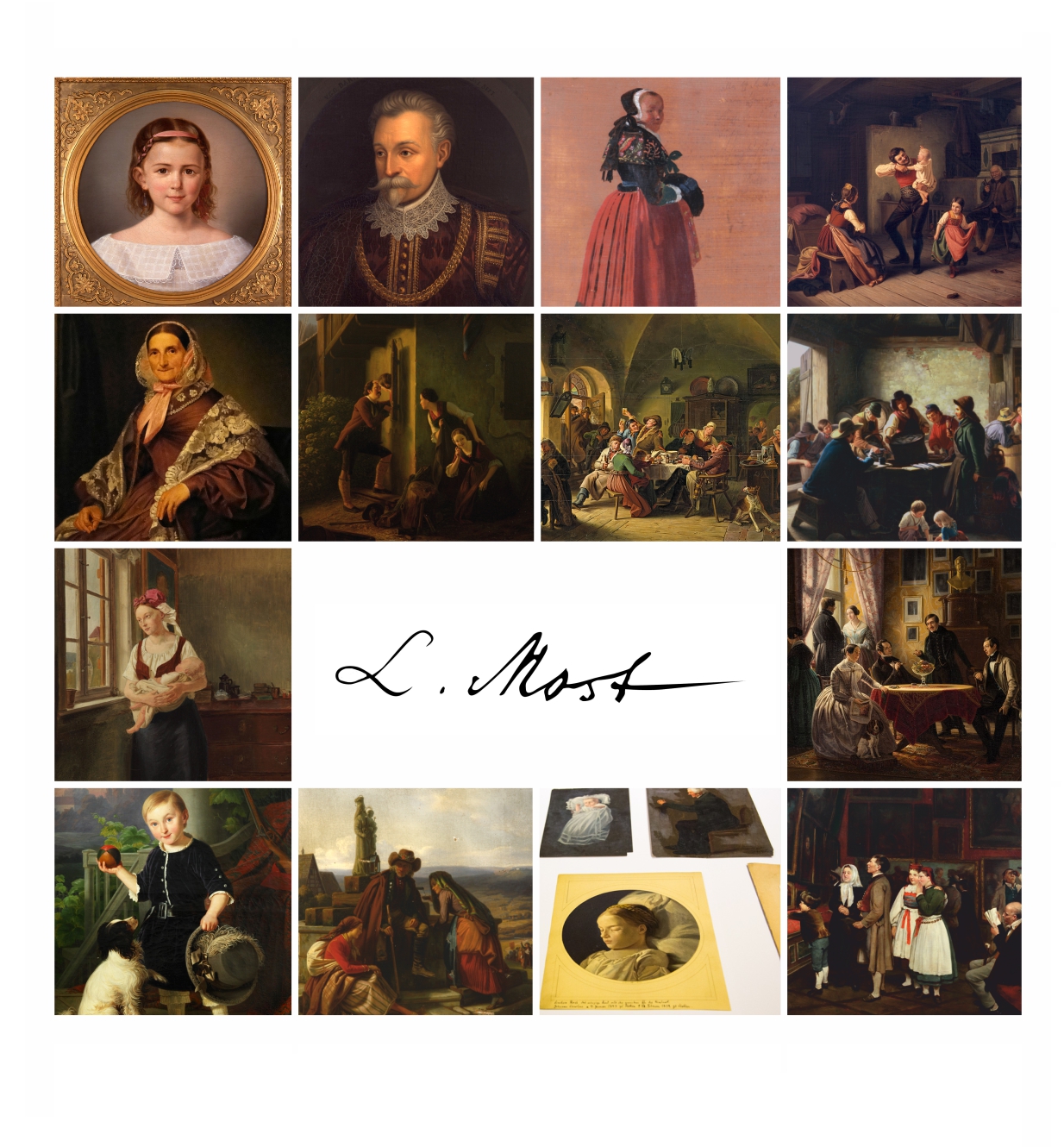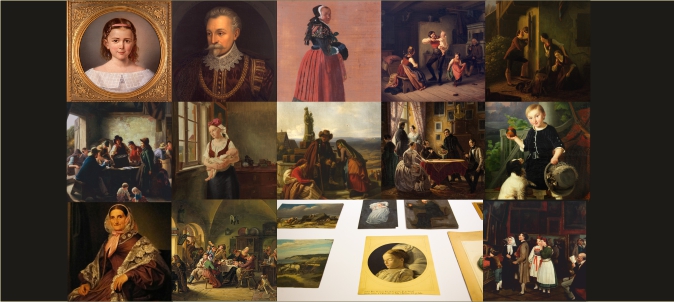The Collecting, Old Art and Painting Lovers' Club, the 9th Secondary Copmrehensive School with Bilingual Units in Szczecin and the National Museum in Szczecin invite to the ceremony of unveiling a commemorative plaque dedicated to Szczecin's outstanding painter August Ludwig Most.
The event is to be held on Friday, 3rd June 2022, at 12.00 at noon. The plaque has been placed on the facade of the building of the 9th Secondary Copmrehensive School with Bilingual Units in Szczecin at Plac Mariacki 1, former St Mary's Foundation Middle School, where the artist taught drawing.
The event schedule includes official speeches by representatives of the authorities of the city of Szczecin and of the initiators: the Collecting, Old Art and Painting Lovers' Club, the 9th Secondary Copmrehensive School and the National Museum in Szczecin. A short lecture will be given by Ewa Gwiazdowska, PhD, an expert in the painter's output. The final of the ceremony will be the premiere presentation of a new painting by August Ludwig Most, purchased by one of Szczecin's collectors.
Carl August Ludwig Most – born on 10th March 1807 as the seventh son of Anna Charlotte née Engel and Johann Christian Most, a locksmith, member of the guild elders, began his artistic education in the traditional way, apprenticing as a journeyman with the Stargard master Thiele, obtaining a diploma in 1825. His diligence and talent, presumably also the support of his family home, enabled him to continue his studies at the Royal Prussian Academy of Arts in Berlin (Königliche Preußische Akademie der Künste). He began his studies in 1825 and continued them until 1830. Initially, he attended drawing class of Ferdinand Collmann (1763–1837). In 1826 he studied at landscape class of Peter Ludwig Lütke (1759–1831), the famous landscape painter and graphic artist, father of Ludwig Eduard, and in plaster class of Johann Gottfried Niedlich (1766–1837), an artist specializing in historical painting. From the second year of his studies, he began to show his works at exhibitions of the Berlin Academy, and he did so regularly until the 1850s.
In 1828, he returned to Pomerania for a short time and worked in Stargard. At the same time, he continued his education in the studio of Berlin historical painter Heinrich Lengerich (1790–1865), his compatriot, by the way. In 1829, among other things, he took lessons in drawing from a live model with Johann Gottfried Schadow (1764–1850), the then director of the academy. In the same year, he joined a Berlin association of young artists - Verein jüngeren Künstler.
The further stage of August Ludwig Most's professional development was Dresden, where he began his independent creative activity and started a family, marrying Karoline Krüger (1805–1840) in 1831. After her death he married Laura Fritz (1812–1900). Two of his six children were born in Dresden, which was reflected in the paintings created at that time.
In 1834, the artist returned to his hometown of Szczecin. Soon afterwards, he organized the first Szczecin exhibition of his output. It is worth mentioning that it was the first exhibition devoted to one artist in Szczecin.
Next to Peter Heinrich Remy, theologian and lawyer and Karl Friedrich Wilhelm, director of the St. Mary's Foundation Middle School, Ludwig August Most was one of the initiators of the first Szczecin association Kunstverein für Pommern, whose aim was to shape and satisfy the aesthetic needs of the townspeople and to develop the local artistic environment. The association organized exhibitions, sold paintings and raffled off original works among its members. August Ludwig Most participated regularly in these exhibitions until 1873.
The need to support his growing family and, above all, his passion for working with children and youth, made him a drawing teacher in Szczecin high schools in December 1841. Initially he worked at St. Mary's Foundation School, then also at the Frederick William School and from 1871 at the Municipal Middle School.
Most was a valued portraitist. Portraits painted by him adorned both public interiors in Szczecin (he was, among others, the creator of the gallery of Pomeranian dukes and professors of the aforementioned St Mary's Foundation School), as well as private, Szczecin and Pomeranian, salons of rich burghers and aristocrats. He specialised in genre scenes. The painter's numerous compositions, like the nineteenth-century realistic novel, seem to be a mirror in which everyday life is viewed - sometimes slightly improved and stylised. The naturalistic way of presenting it is reminiscent of the paintings of the Dutch masters of the 17th century. Originating in the Biedermeier era, popular throughout the 19th century, genre scenes taking place in taverns became a typical element of interior design, corresponding to the bourgeois taste, and gained a common name of "pseudo-Dutch paintings".
Many of Most's paintings correspond to his interest in local, Pomeranian folklore motifs, both in the appearance of people and in interiors and equipment. Most's interest in folklore, stemming from the spirit of Romanticism, places his work in the trend of ethnographic genre representations of the first half of the 19th century, popular in Germany. Occasionally, he also created valued vedute, architectural views and landscapes, usually enriching them with a generic staffage. He also painted copies of old masters' paintings.
One of his disciples was Eugen Dekkert (1865–1956), valued today. Most was professionally active until his death on 27th June 1883. He was buried in the Grabowski Cemetery behind the Royal Gate.
By Dariusz Kacprzak, PhD and Ewa Gwiazdowska, PhD

